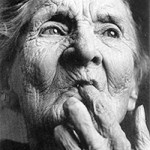Extreme heat is becoming increasingly common across Canada due to climate change—and seniors are among the most vulnerable. In retirement homes, where many residents already live with chronic conditions or limited mobility, heat waves can lead to serious health risks if not properly managed. This article explores how extreme temperatures affect elderly individuals and what retirement homes in Ontario and beyond are doing to protect residents and prevent heat-related illnesses .
 Why are seniors more vulnerable to extreme Heat?
Why are seniors more vulnerable to extreme Heat?Older adults have a reduced ability to regulate body temperature. This is due to age-related changes in the skin, circulation, and the nervous system. Additional factors include:
Chronic conditions (e.g., heart disease, diabetes)
Certain medications (e.g., diuretics, beta-blockers)
Reduced thirst perception
Limited mobility and dependence on caregivers
Cognitive impairments that affect decision-making
These vulnerabilities mean seniors may not recognize signs of dehydration or heatstroke until it's too late.
Ask questions regarding retirement homes to our experts
Some of the most dangerous heat-related conditions include:
Heat exhaustion – fatigue, dizziness, and nausea
Heat stroke – a medical emergency marked by high body temperature and confusion
Dehydration – which can worsen existing health conditions
Sunburn – which can raise body temperature and cause skin damage
Ontario retirement homes and other senior residences follow strict protocols during extreme heat warnings issued by Environment Canada. These include hydration plans, indoor cooling measures, and staff readiness.
| Preventive Measure | Description | Resident Benefit |
|---|---|---|
| Hydration Stations | Water and electrolyte-rich drinks made available throughout the facility | Prevents dehydration and supports thermoregulation |
| Air Conditioning and Ventilation | Cooling systems checked and maintained before the summer season | Maintains safe indoor temperatures during heatwaves |
| Daily Wellness Checks | Staff monitor for signs of heat exhaustion and confusion | Early detection of heat-related illnesses |
| Modified Activity Schedules | Outdoor activities moved indoors or postponed during peak heat | Prevents heat stress and reduces fatigue |
| Light Clothing and Sun Protection | Residents encouraged to wear breathable fabrics and use sunscreen | Reduces skin irritation and sun-related risks |
If you have a loved one in a retirement home, you can ask:
Is the building fully air-conditioned and well-ventilated?
Are staff trained to identify heat-related symptoms in residents?
How often are hydration levels monitored during the summer?
What plans are in place during provincial heat advisories or power outages?
Peace of mind comes from knowing your loved one is living in a facility that prioritizes both comfort and emergency readiness.
As we age, the body’s ability to regulate temperature weakens. Seniors may sweat less, feel less thirsty, or take medications that increase heat sensitivity.
When temperatures reach 30°C (86°F) or higher—especially with high humidity—retirement homes activate heat safety protocols to protect residents.
Many homes implement hydration schedules, place water stations throughout the facility, and track fluid intake as part of each resident’s care plan.
Yes. Environment Canada issues heat warnings and extreme heat alerts, which retirement homes use to activate emergency cooling and safety procedures.
It depends on the time of day and facility policy. Most homes restrict outdoor activities during peak hours and encourage staying in cool indoor spaces.
Don't hesitate to contact us at 343 309 5289 . We can help you choose the right establishment for you and assist you in your search.

Find a suitable senior residence